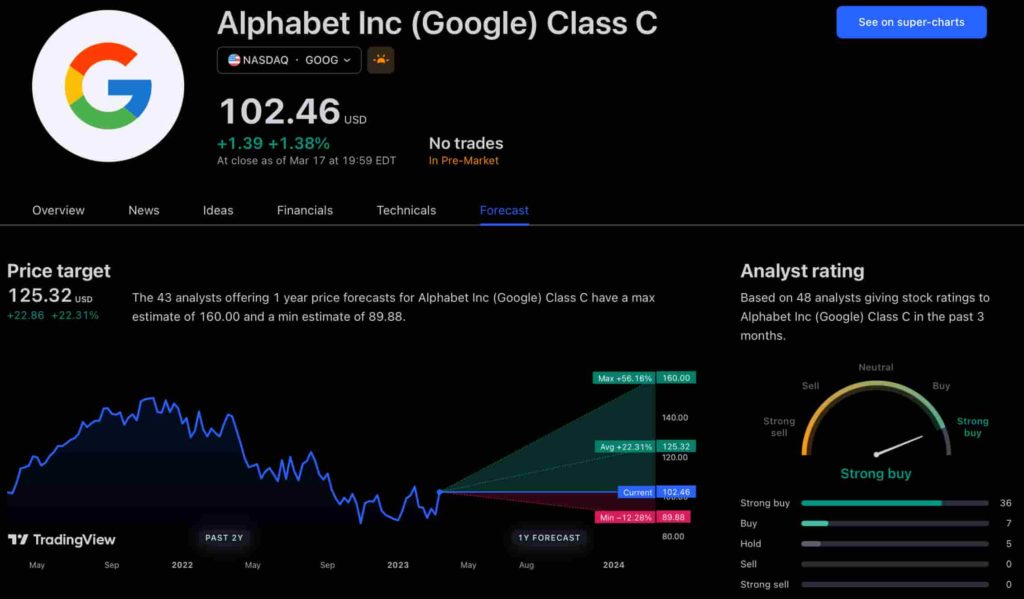The new app is called watchGPT and as I tipped off already, it gives you access to ChatGPT from your Apple Watch. Now the $10,000 question (or more accurately the $3.99 question, as that is the one-time cost of the app) is why having ChatGPT on your wrist is remotely necessary, so let’s dive into what exactly the app can do.
NEWS
Google Changes More Structured Data Requirements via @sejournal, @martinibuster

Google announced a change to several structured data types. This change affects the requirements for the HowTo, QAPage and the SpecialAnnouncement structured data. The guidance didn’t come with examples, which makes it a little difficult to understand but this article will walk through the changes.
The guidance provided by Google stated:
“Removed the following structured data fields from documentation, since they are unused by Google Search and Rich Result Test doesn’t flag warnings for them.”
In general, including structured data that isn’t required could be helpful if it helps describe a page better, even though that structured data won’t produce any visible results in Google’s search results pages in the form of rich results.
Google’s John Mueller has in the past commented on this:
“I think that’s one of the trickier questions with regards to all of the structured data, in that we have a lot of things that we use to try to understand a page and the content on the page that we don’t necessarily show directly in the search results.
But a lot of things help us to better understand the content and the context of a particular page.
And those are things within kind of like a general Schema.org markup which you can do various things.
And that’s kind of I’d say, almost a shame that we don’t highlight that in the rich results test.”
Advertisement
Continue Reading Below
Mueller then goes on to caution about going overboard with extra structured data.
With regard to the structured data properties that Google removed as being required, Google doesn’t warn against using them other than to say that the Rich Results test ignores it and that Google does not use it.
“…since they are unused by Google Search and Rich Result Test doesn’t flag warnings for them. “
HowTo Structured Data Changes
Google announced it has removed the “description” structured data field that pertains strictly to the HowTo data type. The “description” property can still be used in other properties of the HowTo data type, but it’s no longer needed in the HowTo part.
Here’s an example of how it used to be:
<script type="application/ld+json">
{ "@context": "https://schema.org", "@type": "HowTo", "name": "How to tile a kitchen backsplash",
"description": "Any kitchen can be much more vibrant with a great tile backsplash. This guide will help you install one with beautiful results, like our example kitchen seen here.", "image": { "@type": "ImageObject", "url": "https://example.com/photos/1x1/photo.jpg", "height": "406", "width": "305"
},
Here is the new way that omits the “description” property of the HowTo type:
<script type="application/ld+json"> { "@context": "https://schema.org", "@type": "HowTo", "name": "How to tile a kitchen backsplash", "image": { "@type": "ImageObject", "url": "https://example.com/photos/1x1/photo.jpg", "height": "406", "width": "305" },
It’s a little tricky at first because the documentation doesn’t explain it in depth.
The documentation simply states:
Removed the following structured data fields from documentation, since they are unused by Google Search and Rich Result Test doesn’t flag warnings for them:
HowTo: description.”
Advertisement
Continue Reading Below
See what I meant when I said that the documentation was a bit sparse?
Change to the QAPage Structured Data
The author property has been removed as a requirement when using the suggestedAnswer property, under the mainEntity property.
The suggestedAnsswer property is described as:
“One possible answer, but not accepted as a top answer (acceptedAnswer). There can be zero or more of these per Question.”
The purpose of the now removed author property was to name the author of the question.
The guidance from Google is written out like this:
mainEntity.suggestedAnswer.author
Kind of opaque, right?
Here is what the changed structured data used to look like:
"suggestedAnswer": [
{ "@type": "Answer", "text": "Are you looking for ounces or fluid ounces? If you are looking for fluid ounces there are 15.34 fluid ounces in a pound of water.", "dateCreated": "2016-11-02T21:11Z", "upvoteCount": 42, "url": "https://example.com/question1#suggestedAnswer1",
"author": {
"@type": "Person",
"name": "AnotherUser"
}
This is what it looks like now:
"suggestedAnswer": [
{ "@type": "Answer", "text": "Are you looking for ounces or fluid ounces? If you are looking for fluid ounces there are 15.34 fluid ounces in a pound of water.", "upvoteCount": 42, "url": "https://example.com/question1#suggestedAnswer1"
},
See the difference?
Everything after the URL part that pertains to the “author” property is gone.
These additional properties that are a part of the mainEntity property have also been removed
- mainEntity.dateCreated
- mainEntity.suggestedAnswer.dateCreated
- mainEntity.acceptedAnswer.author
- mainEntity.acceptedAnswer.dateCreated
- mainEntity.author
SpecialAnnouncement Structured Data
The SpecialAnnouncement structured data is a Covid-19 structured data that is in Beta, meaning that it’s not super official yet. In fact, the SpecialAnnouncement structured data itself is still under development at Schema.org.
Google offered these examples of situations where the SpecialAnnouncement structured data is appropriate:
- “Announcement of a shelter-in-place directive
- Closure notice (for example, closing a school or public transportation)
- Announcement of government benefits (for example, unemployment support, paid leave, or one-time payments)
- Quarantine guidelines
- Travel restrictions
- Notification of a new drive-through testing center
- Announcement of an event transitioning from offline to online, or cancellation
- Announcement of revised hours and shopping restrictions
- Disease spread statistics and maps”
The following properties have been removed for SpecialAnnouncement and are no longer required:
- provider
- audience
- serviceType
- address
- category
Here’s an example of the “serviceType” and “provider” properties that are no longer required:
Advertisement
Continue Reading Below
Before:
"governmentBenefitsInfo": { "@type": "GovernmentService", "name": "Paycheck Protection Program", "url": "https://www.sba.gov/funding-programs/loans/coronavirus-relief-options/paycheck-protection-program-ppp",
"provider": {
"@type": "GovernmentOrganization",
"name": "US Small Business Administration"
},
"serviceType": "https://schema.org/BusinessSupport",
"audience": {
"@type": "Audience",
"name": "Small businesses"
}
After:
“governmentBenefitsInfo”: {
“@type”: “GovernmentService”,
“name”: “Paycheck Protection Program”
}
It’s a big difference without the structured data properties that are missing but it’s also simpler.
If in doubt or confused, I suggest reviewing the before and after versions of the structured data. You can find the before version at Archive.org
Citations
Google’s QA Page Structured Data Developer Page
https://developers.google.com/search/docs/advanced/structured-data/qapage
Google’s HowTo Structured Data Type Page
https://developers.google.com/search/docs/advanced/structured-data/how-to
Google’s SpecialAnnouncements Structured Data Help Page
https://developers.google.com/search/docs/advanced/structured-data/special-announcements
Google’s Changelog for Updates to their Documentation
https://developers.google.com/speed/docs/insights/release_notes
Facebook Faces Yet Another Outage: Platform Encounters Technical Issues Again

Uppdated: It seems that today’s issues with Facebook haven’t affected as many users as the last time. A smaller group of people appears to be impacted this time around, which is a relief compared to the larger incident before. Nevertheless, it’s still frustrating for those affected, and hopefully, the issues will be resolved soon by the Facebook team.
Facebook had another problem today (March 20, 2024). According to Downdetector, a website that shows when other websites are not working, many people had trouble using Facebook.
This isn’t the first time Facebook has had issues. Just a little while ago, there was another problem that stopped people from using the site. Today, when people tried to use Facebook, it didn’t work like it should. People couldn’t see their friends’ posts, and sometimes the website wouldn’t even load.
Downdetector, which watches out for problems on websites, showed that lots of people were having trouble with Facebook. People from all over the world said they couldn’t use the site, and they were not happy about it.
When websites like Facebook have problems, it affects a lot of people. It’s not just about not being able to see posts or chat with friends. It can also impact businesses that use Facebook to reach customers.
Since Facebook owns Messenger and Instagram, the problems with Facebook also meant that people had trouble using these apps. It made the situation even more frustrating for many users, who rely on these apps to stay connected with others.
During this recent problem, one thing is obvious: the internet is always changing, and even big websites like Facebook can have problems. While people wait for Facebook to fix the issue, it shows us how easily things online can go wrong. It’s a good reminder that we should have backup plans for staying connected online, just in case something like this happens again.
NEWS
We asked ChatGPT what will be Google (GOOG) stock price for 2030

Investors who have invested in Alphabet Inc. (NASDAQ: GOOG) stock have reaped significant benefits from the company’s robust financial performance over the last five years. Google’s dominance in the online advertising market has been a key driver of the company’s consistent revenue growth and impressive profit margins.
In addition, Google has expanded its operations into related fields such as cloud computing and artificial intelligence. These areas show great promise as future growth drivers, making them increasingly attractive to investors. Notably, Alphabet’s stock price has been rising due to investor interest in the company’s recent initiatives in the fast-developing field of artificial intelligence (AI), adding generative AI features to Gmail and Google Docs.
However, when it comes to predicting the future pricing of a corporation like Google, there are many factors to consider. With this in mind, Finbold turned to the artificial intelligence tool ChatGPT to suggest a likely pricing range for GOOG stock by 2030. Although the tool was unable to give a definitive price range, it did note the following:
“Over the long term, Google has a track record of strong financial performance and has shown an ability to adapt to changing market conditions. As such, it’s reasonable to expect that Google’s stock price may continue to appreciate over time.”
GOOG stock price prediction
While attempting to estimate the price range of future transactions, it is essential to consider a variety of measures in addition to the AI chat tool, which includes deep learning algorithms and stock market experts.
Finbold collected forecasts provided by CoinPriceForecast, a finance prediction tool that utilizes machine self-learning technology, to anticipate Google stock price by the end of 2030 to compare with ChatGPT’s projection.
According to the most recent long-term estimate, which Finbold obtained on March 20, the price of Google will rise beyond $200 in 2030 and touch $247 by the end of the year, which would indicate a 141% gain from today to the end of the year.
Google has been assigned a recommendation of ‘strong buy’ by the majority of analysts working on Wall Street for a more near-term time frame. Significantly, 36 analysts of the 48 have recommended a “strong buy,” while seven people have advocated a “buy.” The remaining five analysts had given a ‘hold’ rating.

The average price projection for Alphabet stock over the last three months has been $125.32; this objective represents a 22.31% upside from its current price. It’s interesting to note that the maximum price forecast for the next year is $160, representing a gain of 56.16% from the stock’s current price of $102.46.
While the outlook for Google stock may be positive, it’s important to keep in mind that some potential challenges and risks could impact its performance, including competition from ChatGPT itself, which could affect Google’s price.
Disclaimer: The content on this site should not be considered investment advice. Investing is speculative. When investing, your capital is at risk.
NEWS
This Apple Watch app brings ChatGPT to your wrist — here’s why you want it

ChatGPT feels like it is everywhere at the moment; the AI-powered tool is rapidly starting to feel like internet connected home devices where you are left wondering if your flower pot really needed Bluetooth. However, after hearing about a new Apple Watch app that brings ChatGPT to your favorite wrist computer, I’m actually convinced this one is worth checking out.
-

 PPC6 days ago
PPC6 days ago19 Best SEO Tools in 2024 (For Every Use Case)
-
SEARCHENGINES6 days ago
Daily Search Forum Recap: April 19, 2024
-
SEARCHENGINES7 days ago
Daily Search Forum Recap: April 18, 2024
-

 WORDPRESS6 days ago
WORDPRESS6 days agoHow to Make $5000 of Passive Income Every Month in WordPress
-

 WORDPRESS7 days ago
WORDPRESS7 days ago10 Amazing WordPress Design Resouces – WordPress.com News
-

 SEO6 days ago
SEO6 days ago25 WordPress Alternatives Best For SEO
-

 WORDPRESS6 days ago
WORDPRESS6 days ago7 Best WooCommerce Points and Rewards Plugins (Free & Paid)
-

 MARKETING5 days ago
MARKETING5 days agoBattling for Attention in the 2024 Election Year Media Frenzy
















You must be logged in to post a comment Login